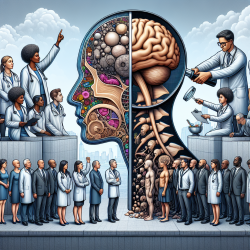Introduction
Bipolar disorder (BD) is a complex and chronic mood disorder affecting approximately 1-4% of the global population. Characterized by alternating episodes of depression and mania, BD poses significant challenges for treatment and management. While pharmacotherapy is often the first line of treatment, it may not fully address the disorder's complexities. This is where psychoanalysis offers a unique perspective.
The Role of Psychoanalysis in Understanding Bipolar Disorder
A recent scoping review, "Mapping the Psychoanalytic Literature on Bipolar Disorder," delves into how psychoanalytic approaches can contribute to understanding and treating BD. This review highlights two main clinical-theoretical considerations:
- The applicability of analytic treatment for BD patients, focusing on their analyzability and practical therapy arrangements.
- Theoretical speculations on the illness's nature, development, and conceptualization of its phases.
Key Findings and Recommendations
The review identified 24 articles, comprising 29 case reports, with a predominant focus on the "object relations" theoretical approach. The findings suggest that psychoanalysis can offer valuable insights into the psychological dynamics of BD, providing a more comprehensive understanding of intrapsychic and interpersonal dynamics.
For practitioners, the review offers several key takeaways:
- BD patients can benefit from psychoanalytic therapy, particularly during remission periods.
- Adjustments in therapeutic techniques, such as focusing on interpersonal themes and stabilizing external reality, may enhance treatment effectiveness.
- Psychoanalysis can help reduce interpersonal conflict, increase patient insight, and promote engagement with lifestyle changes.
Implications for Practitioners
Practitioners can leverage these findings to enhance their therapeutic approaches for BD patients. By incorporating psychoanalytic perspectives, therapists can address the deeper psychological dynamics that medication alone may not resolve. This holistic approach can lead to improved patient outcomes, particularly in reducing recurrence and stabilizing symptoms.
Encouraging Further Research
While the review underscores the potential of psychoanalysis in treating BD, it also highlights the need for further research. Practitioners are encouraged to explore this area further, potentially contributing to the development of evidence-based psychoanalytic interventions for BD.
Conclusion
Incorporating psychoanalytic insights into the treatment of bipolar disorder offers a promising avenue for improving patient outcomes. By understanding the complex psychological dynamics at play, practitioners can provide more effective and personalized care.
To read the original research paper, please follow this link: Mapping the psychoanalytic literature on bipolar disorder: a scoping review of journal articles.










